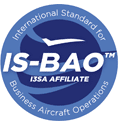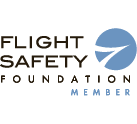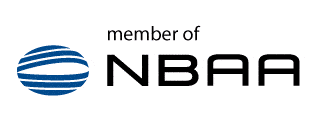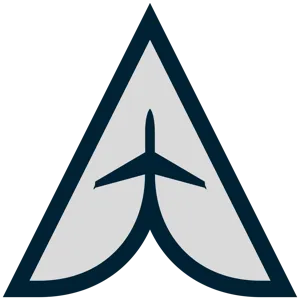About One Day Pilot Emergency Procedures

Dear Valued CAE Partners,
Enclosed in this letter are talking points, key concepts, and value propositions for the Aircare FACTS One Day Pilot program. The purpose of this document is to provide you some framework needed to discuss this program with your customers, and hopefully, to answer most questions that may come up in conversations with customers and prospects.
It is extremely important to understand that the One Day Pilot (ODP) program meets/exceeds training requirements set forth by FAR 135.331 for general emergency training. This is an FAA mandate for Part 135 operators, but the curriculum outlined in the requirement is also viewed as best practice across the entire business aviation industry. As a result, most Part 91 flight departments also seek out this type of training. Your customers are going to receive this training somewhere – whether that is through the CAE/Aircare FACTS channel or with your competitor. Some flight departments may even elect to provide this training internally, which is often inefficient and expensive. The quality and efficiency of ODP is a major differentiator for CAE – please use it to your advantage.
By offering ODP, you are also providing a “complete” customer experience. Aircare has thoughtfully scheduled available courses based around CAE sim schedules, with classes being offered 3x per week at DFW, 2x per week at MMU and 1x per week at other Aircare FACTS Training Centers. CAE can schedule customers for any of our available programs, including programs provided at non-CAE facilities.
Another major differentiator, is our instructor roster. Aircare has hand-selected our instructors, who are subject matter experts in varied fields. This combination of real-world experience give us an edge, as instructors draw on their own professional experiences to deliver the program. As a student, you may encounter a veteran flight attendant, a paramedic, or a firefighter teaching your class.
Lastly, Aircare has put forth a concerted effort to make scheduling ODP as simple and seamless as possible for the CAE team. By accessing our weblink (https://schedule.aircareinternational.com/training-schedule/cae-one-day-pilot-emergency-procedures), CAE reps will be able to view our current schedule by date and location, and submit scheduling requests directly to the Aircare FACTS team. This weblink is for internal use only, and is not to be shared with your customers.
Please take the time to review the One Day Pilot program modules and summary on the following page. And, as always, please feel free to reach out directly to me or to the Aircare FACTS team with any additional questions.
Sincerely,
Jake Paini
Director of Sales
Jake.p@aircareintnl.com
(360) 754-9805 x 502
Aircare FACTS One Day Pilot Training Program (General Emerency Training)
Program Hours:
1000 – 1730 for ODP-only
0800 – 1730 for ODP with inclusion of optional Inflight Medical module
Please note that Decompression and Hypoxia and Water Survival can be scheduled as standalone modules, or as a Hypoxia/Water combination. Please contact the Aircare FACTS Team directly for these specialized programs: factsscheduling@aircareintnl.com. You will not be able to submit these registrations through the weblink.
*1400 – Hypoxia-only, or Hypoxia/Water start time
*1500 – Water-only start time
Program Modules and Summary
- Emergency Evacuations – our full-motion cabin simulators make this a realistic experience. Students experience hard landings, water landings, and are asked to evacuate through various points of exit. All students are tasked with managing a scenario (tbd by the instructors), and guide their “passengers” (other students) through a safe evacuation. This can be nerve-wracking, even for the most experienced pilots, and exposes the human element of emergencies.
- Inflight Fire and Smoke Procedures – students will be asked to fight a live fire. Ask a pilot or flight attendant – inflight fire is probably the scariest emergency to experience at altitude. Understanding how to react and plan for this situation is an important takeaway. We also discuss fire science and the various types of fires, including lithium battery fires which have increased substantially in recent years (think about all of the personal electronic devices we carry).
- *Decompression and Hypoxia (High Altitude) Training – students will experience the effects of hypoxia by use of our Reduced Oxygen Breathing Device, or ROBD. Those experiencing hypoxia in-flight often lose complete control of mind and body, which can make it impossible to safely operate an aircraft. You may have some customers that have used “the chamber” for this training in the past. Again, Aircare FACTS provides a solution so that your customers do not need to leave the CAE facility to accomplish this training.
- *Water Survival/Pool Training – we end the ODP program at the pool, covering use of rafts, life vests, and survival kits. We also offer an inversion dunker that allows students to experience an inverted water landing and the disorientation that follows such an event. It is important that flight crew physically use and understand how to deploy these survival tools.
- Inflight Medical Training (CPR/AED Certification) – every ODP student is provided an option to add Inflight Medical Training (CPR/AED) to their day. This will need to be determined and scheduled ahead of class, but this is another required training component that we can provide CAE customers. By adding the IFM module, CAE customers can accomplish their emergency/safety and medical training in one 8-hour day.




